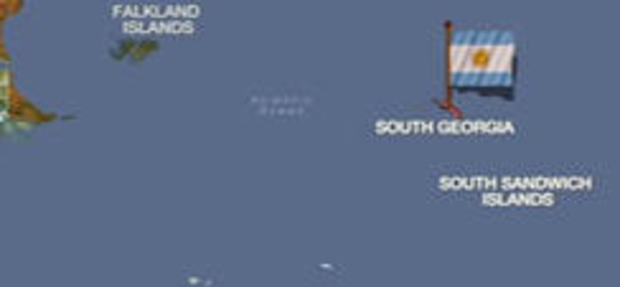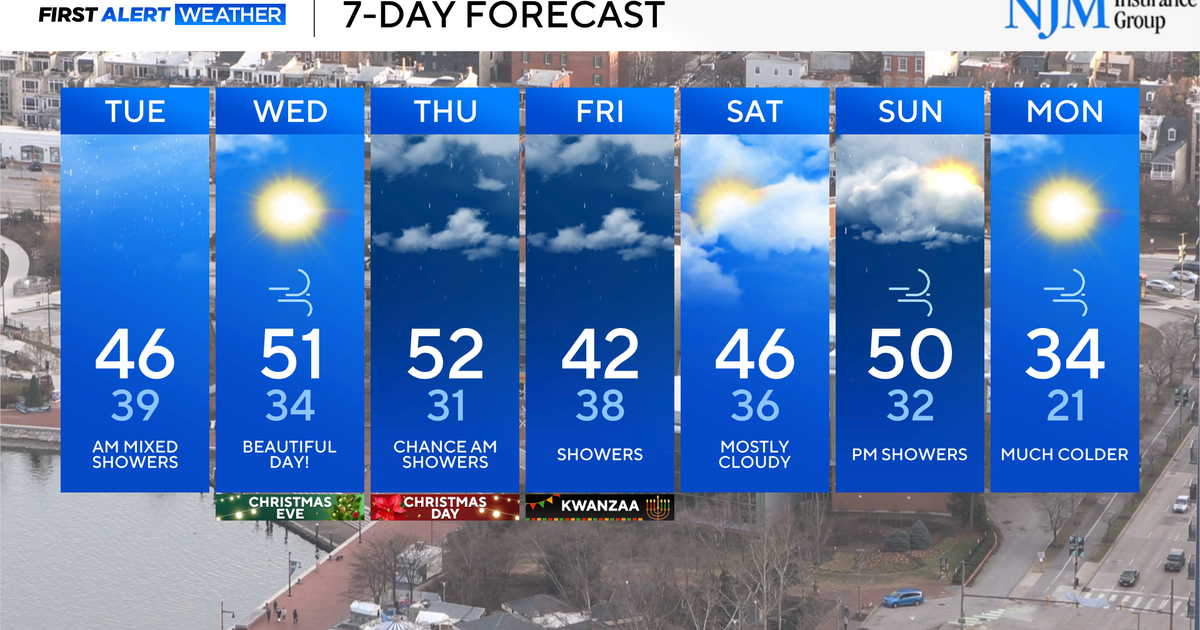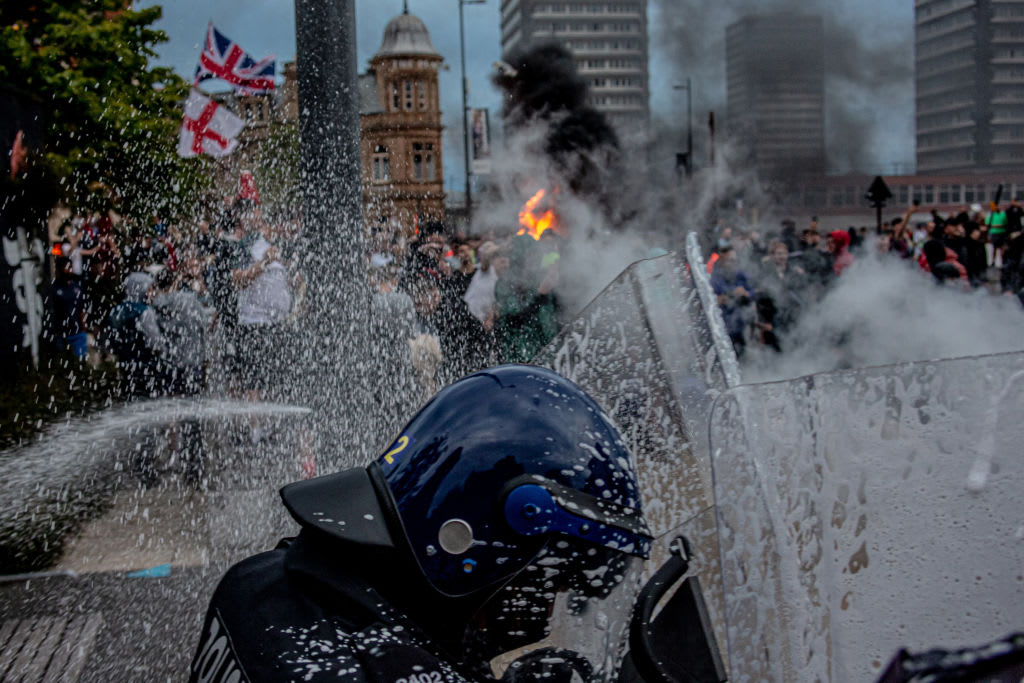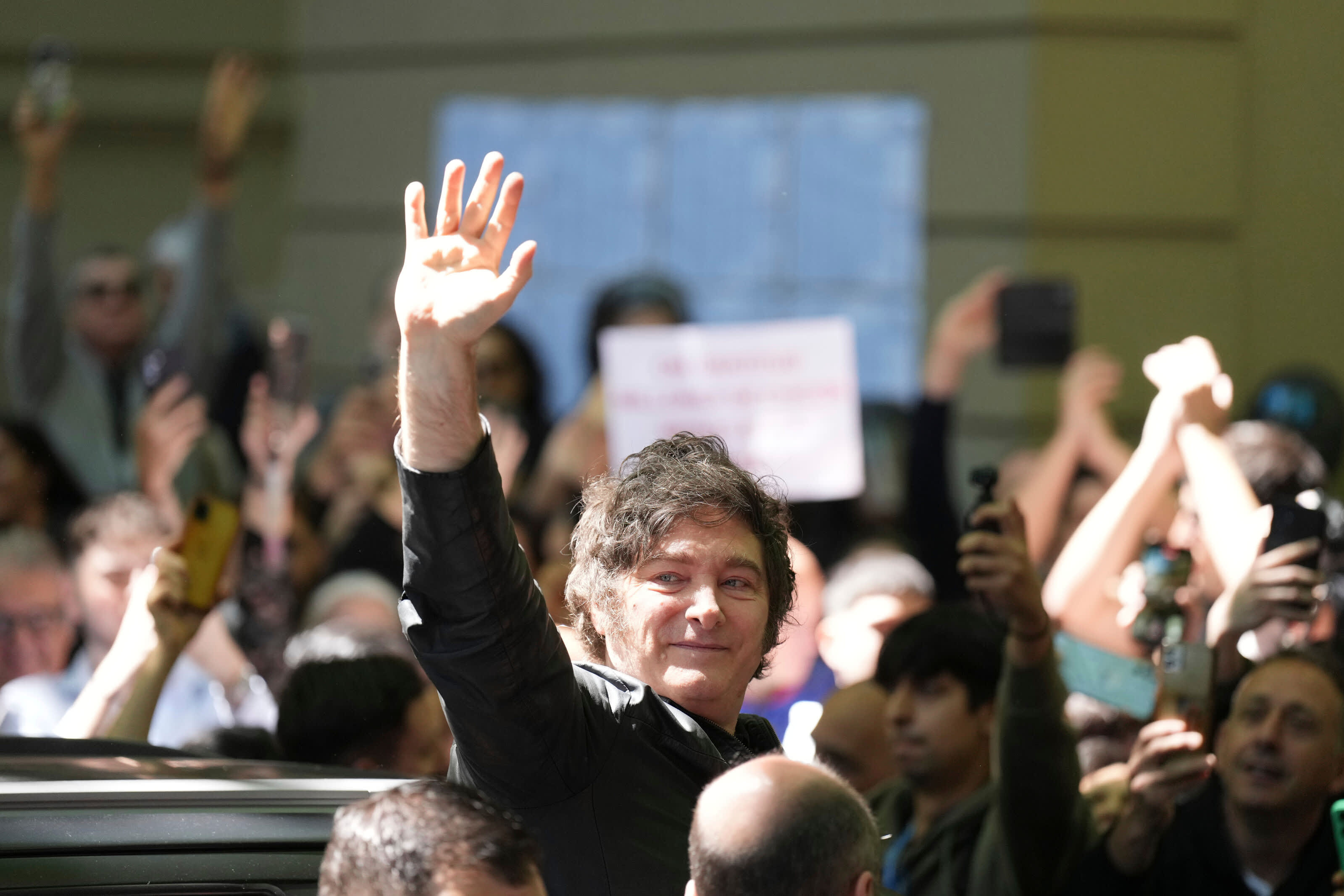Almanac: The Falklands War
And now a page from our “Sunday Morning” Almanac: March 19, 1982, 35 years ago today … opening day for a war in the remote South Atlantic.
For that was the day a small group of Argentine civilians planted their country’s flag on South Georgia Island, which -- along with the Falkland Islands to the west -- had been British territory since 1833.
On April 2, Argentina’s military invaded the Falklands, claiming them as Argentine territory, to be known as the Malvinas.
Ham radio operators helped get the word out: “Approximately 9:30 GMT a group came shore in landing craft and then stormed the town of Port Stanley.”
Britain responded with a naval armada, including two aircraft carriers and the ocean liner Queen Elizabeth 2, refitted as a troop ship.
At stake was a group of windswept islands with some 2,000 people -- and many, many thousands of sheep.
On April 25, British forces retook South Georgia Island, prompting this famous declaration by Prime Minister Margaret Thatcher: “Just rejoice at that news, and congratulate our forces and the Marines.”
British spirits rose again a few days later, when a Royal Navy submarine sank the Argentine cruiser General Belgrano. Just days later, Argentina struck a counterblow by sinking the British destroyer Sheffield with an air-launched missile.
On May 21, the first British forces landed on the Falkland Islands and engaged in battle.
As combat video made it back to London, our Martha Teichner reported of an Argentine fighter jet blown up in midair by a British missile.
On June 14, the last Argentine forces surrendered.
In all, Argentina lost more than 650 dead, and Britain more than 250. And a third of a century later, the Falklands remain a British Overseas Territory -- even as Argentina continues to press a claim it failed to win by combat. A three-month interlude of sound and fury, signifying ... the status quo.
For more info:
- The Falkland Islands Conflict
- The Question of the Malvinas Islands (Argentine Ministry of Foreign Affairs)






